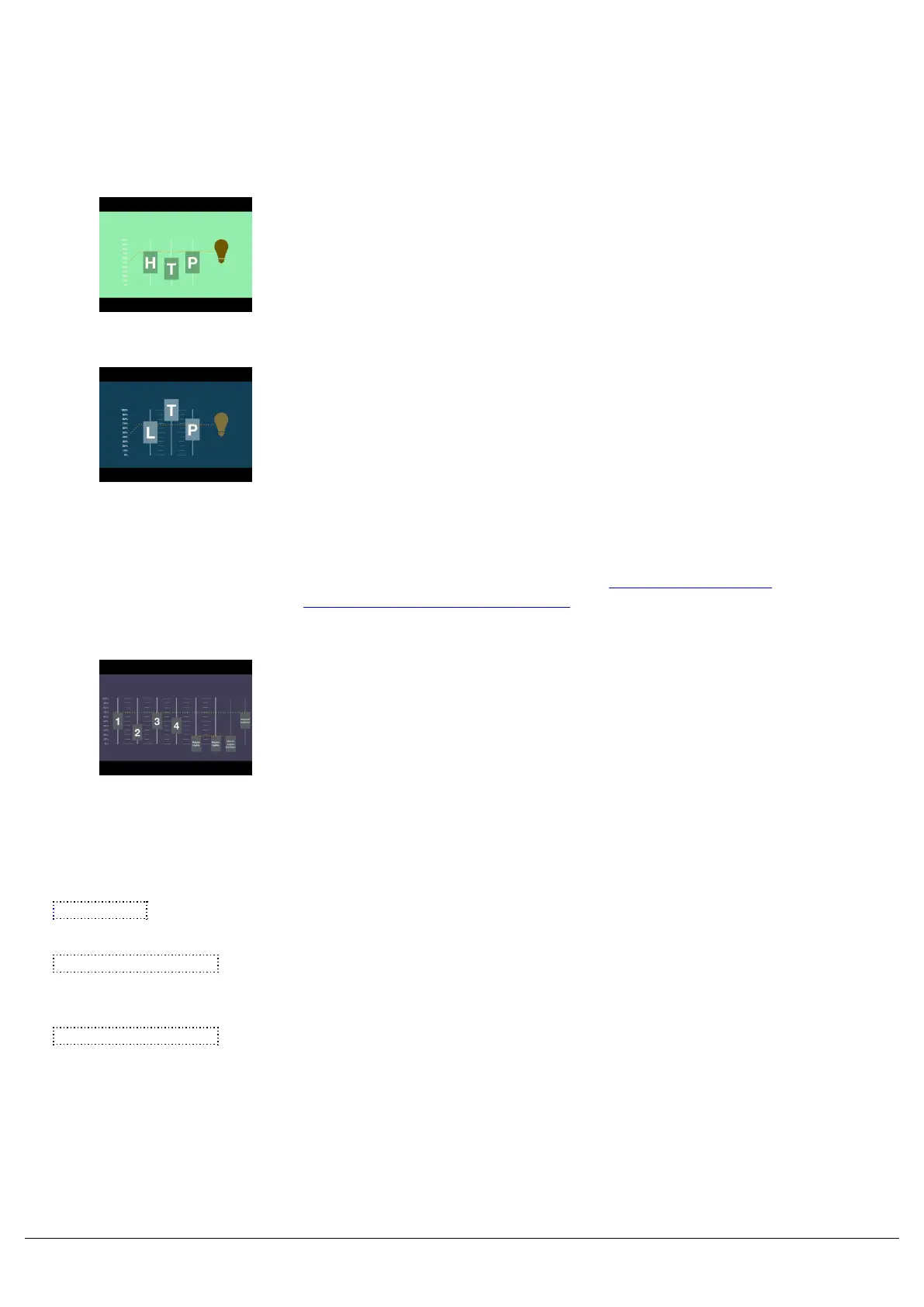Intensity Mixing
This option determines how the intensity parameters controlled by this playback are mixed with other playbacks. The
following options are available:
Highest takes precedence (HTP) – This default option will output the
highest value of all the playbacks – so if an intensity is at 50% on one
active playback, and at 75% on another active playback, it will output
at 75%. As that playback is pulled down, the intensity will reduce to
50%, but stay at 50% as that becomes the highest value for that fixture.
Latest takes precedence (or “Soft LTP”) –the intensity of fixtures will
match the latest command, rather than the highest. If one active
playback has a fixture at 100%, and another playback is at 50%, set to
LTP, as this fader is raised, the fixture will fade down to 50%, as this is
the “latest” command.
LTP Catch – This is an alternative version of LTP, where control of a
value will only happen when the fader goes past the current value.
This is useful to “catch” values that are currently high, to bring them
back down to a lower intensity. When this fader is lowered all the way
to 0, by default it will release, meaning it looses control again of the
fixtures. Release on Lower can be disabled. See the Raise & Lower
playback settings for more information.
Inhibit – Inhibitive playbacks do not output the programmed intensities
of the current cue, but instead act as a “proportional scale” for those
channels. When changing cues, these values change, allowing
multiple Inhibitor states to be stored onto a single playback.
Fader Function
The operation of the playback fader may be one of the following options:
HTP Master – Simply controls the maximum level of the programmed HTP channels. Cues are triggered via the GO
key. This is the default option.
Manual Fader (1 Way) - Raise the playback's fader, and the first cue is output. Lower the fader, and the next time
the fader is raised, the next cue is output. The fader controls the HTP levels; the LTP channels are triggered when the
fader is moved from zero and then fade according to the times defined in the incoming cue.
Manual Fader (2 Way) – Raise the playback's fader, and the first cue is output. Lower the fader, and you cross fade
into the next cue. Raise the fader, and you crossfade into the next cue, and so on. Moving the fader creates a dipless
cross-fade between the two cues. The fader controls the HTP levels; the LTP channels are triggered when the fader is
moved from the end stop and then fade according to the times in the incoming cue.
Fader Function options are not available if the playback is a chase.
Zero 88 - ZerOS - Page 129 of 233 Printed: 23/11/2020 12:50:03 JH

